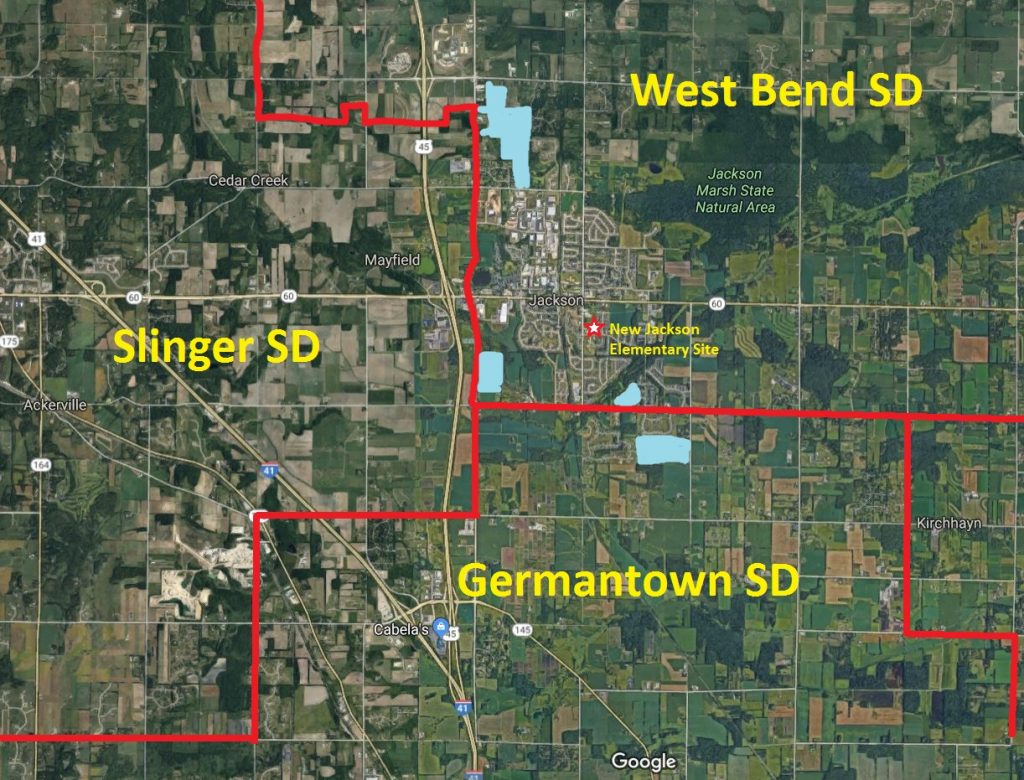This guest editorial a the Washington County Insider by Dan Krier, a former member of the CFAC, gives a damning perspective of the crooked process that led up to the current referendum. Below is the start, but please be sure to click through and read the whole thing.
March 30, 2019 – West Bend, WI – As a long-time resident of the West Bend School district, and an advocate for quality education in West Bend, I need to share my experience in regard to the proposed referendum. I have read and heard so many say it’s for education so we have to vote for it.
If it were about education I could vote for it, but it isn’t.
It is about buildings, and more specifically the maintenance of and lack of planning in regard to the buildings. And, the fact that some just want a new school to provide the fancy alternative work spaces that Bray Architectural Firm is flashing before them. We had an alternative learning program in our charter school and we chose not to fund that. Yet we want to push for the alternative space, which is what the new school is really about. Is our school district in the business of buildings, or is it education. I would choose spending on education. I went to a school built in the 1800s and when I entered West Bend East HS I was ahead of most of my class. The building certainly didn’t deter from my education.
I have been very active in getting information in regard to this referendum as I was on the Citizen Facilities Advisory Committee (CFAC). I believe this referendum will do more damage to the district than good. I was at the city council meeting when superintendent Kirkegaard presented the plan. Many of the Aldermen were concerned with the level of debt this would levy on the district. They know the city was strapped for several years under massive debt. And it was only when they got the debt under control they are able to now repair the roads that so desperately need it. They and I know that this debt will strap the district just as it did the city. The approximate $105 million of debt would dwarf that of the entire city of West Bend.
Besides the debt issue, at least one alderman had issue with the presentation stressing need. He said to Kirkegaard that while you claim you are not dictating which way to vote, it certainly sounds as if you are. Yes it was definitely a sell job as I was at several of the presentations.
This district continues to be dishonest with the citizens. And while many support the decisions, I wonder how many wouldn’t if they knew just how dishonest this process has been and the truth behind the spending. The level of dishonesty is to the point where the lack of credible planning to address objective issues, is a detriment to the district. Even many of the School Board members either don’t know enough to realize it, or are just taking an administrators word. Some said these fixes will prevent spending on maintenance in the future. That couldn’t be farther from the truth. Many of the real issues have not even been addressed when instead we are fulfilling someone’s wish list. Poor planning got us to where we are today, just as the current lack of credible planning will have the district back at the table for more money in the near future. Yes another referendum in just a few short years.
Back to CFAC. We took tours of both Jackson and the high school during the first couple meetings of the CFAC. The committee was supposedly assembled to address the objective needs. But on the 4th meeting Bray presented a list of needs to the committee including 113 items from Jackson and 76 From the HS most of which we never even discussed. Objective needs like “dated doors.” Not worn, rusted or unusable, but dated. When questioning where they came from, there was a lot of uncertainty and the Bray representative finally even admitted we were not there for what we were told. We were there because the 25-year plan said Jackson and the HS are the items to address next, and we were gathered to decide on how to sell it to you the people.





